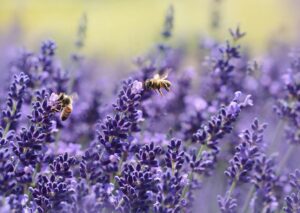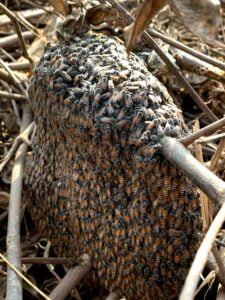Beekeeping, an ancient practice with modern relevance, offers both environmental benefits and personal rewards. Delving into beekeeping involves mastering essential factors—from hive management to honey harvesting—each critical for successful beekeeping. This article explores six key considerations that aspiring beekeepers must understand to embark on their journey confidently and sustainably.
Table of Contents

Before diving in, it’s important to take the time to learn about beekeeping and the practices involved. Look here if you are just getting started. Here’s some of the research that we feel is most important:
Understanding Biology and Behavior of Bees
- Knowledge of Bee Species: Understanding the different species of bees, particularly honeybees, helps in selecting the right type for your needs.
- Apis mellifera (Western Honeybee)
- Apis mellifera mellifera – European dark bee or German black bee
- Apis mellifera ligustica – Italian honey bee
- Apis mellifera carnica – Carniolan honey bee
- Apis mellifera caucasia – Caucasian honey bee
- Apis mellifera iberiensis – Iberian honey bee
- Apis mellifera intermissa – North African bee
- Apis mellifera lamarckii – Egyptian bee
- Apis mellifera syriaca – Syrian bee
- Apis mellifera capensis – Cape bee
- Apis mellifera scutellata – African honey bee – Check out Discovering African Bee Honey: 6 Key Aspects to Explore for more information.
- Apis cerana (Asian Honeybee)
- Apis dorsata (Giant Honeybee)
- Apis florea (Dwarf Honeybee)
- Apis mellifera (Western Honeybee)
- Colony Structure: Learning about the roles of the queen, workers, and drones within a hive ensures you can recognize normal and abnormal behaviors.
- Queen Bee:
- Primary Role: The queen’s main function is to lay eggs, ensuring the colony’s growth and continuity.
- Pheromone Production: Produces pheromones that help maintain colony cohesion and regulate worker bee behavior.
- Behavioral Indicators: A healthy queen will lay eggs consistently. Reduced egg-laying or erratic behavior can signal health issues or an aging queen.
- Read more at 6 Ways Queen Bees Influence Hive Behavior and Productivity.
- Worker Bees:
- Diverse Responsibilities: Perform various tasks such as foraging for nectar and pollen, feeding larvae, producing honey, and defending the hive.
- Lifecycle and Duties: The role of a worker bee changes with age, starting with nursing duties and progressing to foraging as they mature.
- Behavioral Indicators: Normal behavior includes active foraging and smooth hive operation. Signs of stress or disease include lethargy, disorganized hive activities, or increased aggression.
- For more detail on worker bees, check out – Understanding the 4 Life Stages of a Honey Bee Worker: Insights for Beekeepers
- Drones:
- Primary Role: Drones exist to mate with a queen from another hive, ensuring genetic diversity.
- Seasonal Presence: Drones are usually more numerous in the spring and summer and are often expelled from the hive in the fall to conserve resources.
- Behavioral Indicators: Normal behavior involves limited activity within the hive except for mating flights. An unusually high number of drones may indicate a queen replacement or failing queen.
- Read more at 5 Essential Roles of Honey Bee Drones Every Beekeeper Needs to Know
- Queen Bee:
- Life Cycle: Familiarity with the bee life cycle helps in managing the hive effectively throughout the year.
Learn About Beekeeping Best Practices
Advanced Techniques in Apiculture: 10 Pro Tips for Beekeepers
Hive Management: Knowing How to Inspect, Maintain, and Manage Hives
- Regular Inspections:
- Conduct thorough inspections of hive frames to assess brood patterns, honey stores, and overall colony health.
- Look for signs of disease, pests, and the presence of a healthy queen.
- Maintenance Tasks:
- Replace old or damaged frames to maintain hive structure and prevent comb collapse.
- Ensure hive entrances are clear and provide adequate ventilation.
- Managing Hive Dynamics:
- Monitor hive population and consider splitting colonies to prevent overcrowding and swarming.
- Rotate hive boxes to equalize colony strength and distribution of resources.
- Ultimate Swarm Prevention Guide: 12 Proven Beekeeper Tips
Seasonal Activities: Understanding the Seasonal Needs and Behaviors of Bees
Choosing Bee Feeders: 10 Proven Tips and How to Use Them
- Spring:
- Monitor hive activity and prepare for increased foraging and brood rearing.
- Manage hive space to prevent overcrowding and prepare for potential swarms.
- Summer:
- Ensure bees have access to adequate water sources and manage hive ventilation during hot weather.
- Harvest honey and monitor for pest infestations, such as Varroa mites.
- Fall:
- Assess hive health and prepare colonies for winter by ensuring adequate food stores.
- Protect hives from cold weather and pests while minimizing disturbance.
Pest and Disease Control: Awareness of Common Pests and Diseases
8 Common Beehive Pests and Effective Prevention Tips for Beekeepers

- Identifying Pests:
- Monitor for Varroa mites by performing mite counts and using sticky boards or alcohol washes.
- Implement Integrated Pest Management (IPM) strategies to control small hive beetles and wax moths.
- Recognizing Diseases:
- Inspect brood patterns for signs of foulbrood diseases and assess adult bees for symptoms of Nosema.
- Learn to differentiate between European foulbrood and American foulbrood to apply appropriate treatment.
- Preventative Measures:
- Maintain hive hygiene by regularly cleaning equipment and removing old comb.
- Practice biosecurity measures when introducing new bees or equipment to minimize disease transmission.
Safety and Legal Considerations
Protective Measures: Learning About Necessary Protective Clothing and Equipment

- Beekeeping Suit:
- Wear a full beekeeping suit, including a veil, gloves, and boots, to protect against bee stings.
- Choose suits made from lightweight, breathable materials for comfort during hive inspections.
- Tools and Accessories:
- Safety Practices:
- Always work slowly and calmly around bees to avoid provoking defensive behavior.
- Maintain good visibility by ensuring your veil is securely attached and not obstructing your view.
- San Bernadino created a nice printable sheet here.
Local Regulations: Researching Laws and Regulations Regarding Beekeeping
- Know Your Local Laws:
- Research city, county, and state regulations regarding beekeeping practices, hive placement, and hive density limits.
- Understand zoning requirements and any permits or licenses needed to keep bees legally.
- Community Standards:
- Respect neighbors’ concerns about beekeeping and educate them about the benefits of bees for pollination and local ecology.
- Communicate with local beekeeping associations or extension offices to stay informed about changes in regulations.
Learn About Beekeeping: Understanding the Importance of Proper Protective Measures and Local Regulations
- Education and Training:
- Take beekeeping courses or workshops to learn best practices for handling bees safely and effectively.
- Stay updated with resources and publications from beekeeping associations to enhance your knowledge and skills.
Environmental Impact
Pollination Benefits: Understanding the Role of Bees in Pollination
- Ecosystem Contribution:
- Bees play a crucial role in pollinating plants, including many crops essential for human food production.
- Learn about beekeeping to appreciate how your activities contribute to local biodiversity and enhance crop yields.
- Pollination Process:
- Bees transfer pollen from male to female flower parts, enabling fertilization and fruit or seed production.
- Understand the intricate relationship between bees, plants, and the environment by studying beekeeping practices.
- Impact on Agriculture:
- Healthy bee populations increase agricultural productivity and improve the quality of fruits, vegetables, and nuts.
- Explore how beekeeping practices can optimize pollination services and promote sustainable food systems.
- 7 Ways Beekeepers Drive Agricultural Sustainability: From Pollination Partnerships to Biodiversity Promotion
Sustainable Practices: Learning Sustainable Beekeeping Practices
- Habitat Enhancement:
- Plant bee-friendly flowers and maintain diverse habitats to provide forage and nesting sites for bees.
- Learn about beekeeping to ensure your practices support local bee populations and enhance biodiversity.
- Integrated Pest Management (IPM):
- Use non-chemical methods to control pests and diseases, such as screened bottom boards and drone brood removal.
- Adopt IPM strategies to minimize environmental impact and promote bee health.
- Responsible Hive Management:
- Rotate hive locations to prevent overexploitation of resources and reduce stress on local ecosystems.
- Explore sustainable beekeeping methods to minimize disturbances and maintain natural balance.
Learn About Beekeeping: Understanding the Importance of Pollination Benefits and Sustainable Practices
- Educational Resources:
- Access beekeeping literature, workshops, and online courses to deepen your understanding of pollination ecology.
- Stay informed about sustainable practices to ensure your beekeeping activities align with environmental conservation goals.
Financial and Time Commitment
Cost of Supplies: Researching the Cost of Equipment, Bees, and Ongoing Maintenance
- Initial Equipment:
- Research the prices of essential beekeeping equipment, including hive boxes, frames, and protective gear.
- Learn about beekeeping to understand which equipment items are necessary for starting and maintaining a hive.
- Bees Acquisition:
- Compare the costs of buying bees through packages, nucs (nucleus colonies), or catching swarms.
- Budget for transportation costs or shipping fees if purchasing bees from a distant supplier.
- Ongoing Maintenance:
- Estimate ongoing expenses such as feeding supplements, medications for pest control, and hive repairs.
- Learn about beekeeping to manage your budget effectively and prioritize investments in hive health and productivity.
Time Investment: Understanding the Time Commitment Required for Hive Inspections and Other Tasks
- Hive Inspections:
- Plan regular inspections to monitor colony health, assess honey production, and prevent disease outbreaks.
- Learn about beekeeping to optimize inspection techniques and streamline hive management routines.
- Feeding and Management Tasks:
- Allocate time for feeding bees during periods of nectar dearth or winter months when natural forage is limited.
- Budget sufficient time for hive maintenance tasks, such as replacing damaged frames or requeening colonies.
- Educational Commitment:
- Dedicate time to ongoing learning about beekeeping practices, pest management strategies, and seasonal hive management.
- Prioritize continuous improvement to enhance your skills and knowledge in beekeeping.
Learn About Beekeeping: Understanding the Importance of Cost Considerations and Time Investment
- Financial Planning:
- Develop a beekeeping budget that accounts for initial setup costs, ongoing expenses, and unexpected emergencies.
- Stay informed about beekeeping practices to make informed decisions that optimize resource allocation and financial sustainability.
Community and Resources
Joining Clubs and Associations: Connecting with Local Beekeeping Associations and Clubs
- Local Networking:
- Join local beekeeping clubs or associations to connect with experienced beekeepers in your community.
- Attend meetings, workshops, and field days to exchange knowledge and experiences with fellow bee enthusiasts.
- Learn about beekeeping from seasoned beekeepers who can provide practical advice and mentorship.
- Support and Resources:
- Access resources such as beekeeping libraries, equipment loans, and collective purchasing opportunities through clubs.
- Participate in hive inspections and hands-on demonstrations organized by associations to enhance your practical skills.
- Learn about beekeeping regulations and community initiatives that impact local beekeeping practices.
- Community Engagement:
- Contribute to community outreach and education initiatives to raise awareness about the importance of bees and pollination.
- Collaborate with local farmers, gardeners, and environmental organizations to promote sustainable beekeeping practices.
Educational Resources: Utilizing Books, Online Courses, and Workshops
- Reading Materials:
- Explore beekeeping books and publications to deepen your understanding of bee biology, hive management, and beekeeping techniques.
- Learn about beekeeping through comprehensive guides that cover topics from beginner basics to advanced hive management strategies.
- Online Courses and Webinars:
- Enroll in online beekeeping courses offered by reputable organizations and universities to gain theoretical knowledge and practical skills.
- Participate in webinars hosted by beekeeping experts to stay updated on emerging trends, research findings, and best practices.
- Workshops and Training Programs:
- Attend hands-on workshops and training programs focused on specific aspects of beekeeping, such as queen rearing or honey extraction.
- Learn from experienced instructors and engage in interactive sessions to develop proficiency in beekeeping techniques.
Learn About Beekeeping: Emphasizing the Value of Joining Clubs and Using Educational Resources
- Knowledge Expansion:
- Expand your knowledge base and skills in beekeeping through continuous learning and engagement with educational resources.
- Harness the collective wisdom of beekeeping communities and educational platforms to enhance your effectiveness as a beekeeper.
Conclusion
By thoroughly researching bees and beekeeping before starting, you set yourself up for success, ensuring that you can provide the best care for your bees while reaping the rewards of this fascinating and rewarding hobby.



